Search
To search for an exact match, type the word or phrase you want in quotation marks.
A*DESK has been offering since 2002 contents about criticism and contemporary art. A*DESK has become consolidated thanks to all those who have believed in the project, all those who have followed us, debating, participating and collaborating. Many people have collaborated with A*DESK, and continue to do so. Their efforts, knowledge and belief in the project are what make it grow internationally. At A*DESK we have also generated work for over one hundred professionals in culture, from small collaborations with reviews and classes, to more prolonged and intense collaborations.
At A*DESK we believe in the need for free and universal access to culture and knowledge. We want to carry on being independent, remaining open to more ideas and opinions. If you believe in A*DESK, we need your backing to be able to continue. You can now participate in the project by supporting it. You can choose how much you want to contribute to the project.
You can decide how much you want to bring to the project.

Within an undivided city, everything is possible, all kinds of adjustments can be made, all kinds of accommodations can be considered, all kinds of autonomy can be enjoyed, all kinds of positive relationships can be developed.[1]Teddy Kollek’s sppech, date unknown.
Teddy Kollek, a Jewish man born in Hungary, served as the mayor of Jerusalem from 1965 to 1993 with a key goal of turning the city into a hub for arts and culture. While the museums and modern architecture were intended to showcase this vision, they also had the unintended effect of perpetuating a colonial viewpoint of tribal cultures. These cultures were often exoticized and dehumanized, creating a hierarchy in which they were considered “uncivilized” by colonial powers.
Kollek saw art as a way to bring people together and decided that the city and the state of Israel needed a modern art museum. However, it was a white Western, modernist idea of art and of history that he imposed on a place that had a richer history than he could ever have imagined. Commissioned art and artists are always used by power to tell a particular story of progress and enlightenment of progressive values and inclusiveness. It’s merely a tool in the big toolbox, a few words in the vocabulary of the art used by the nation-state to be portrayed by the world as a nation-state that is civilized, democratic, in line with Western moral values, progress and capitalism, the best of colonialism.
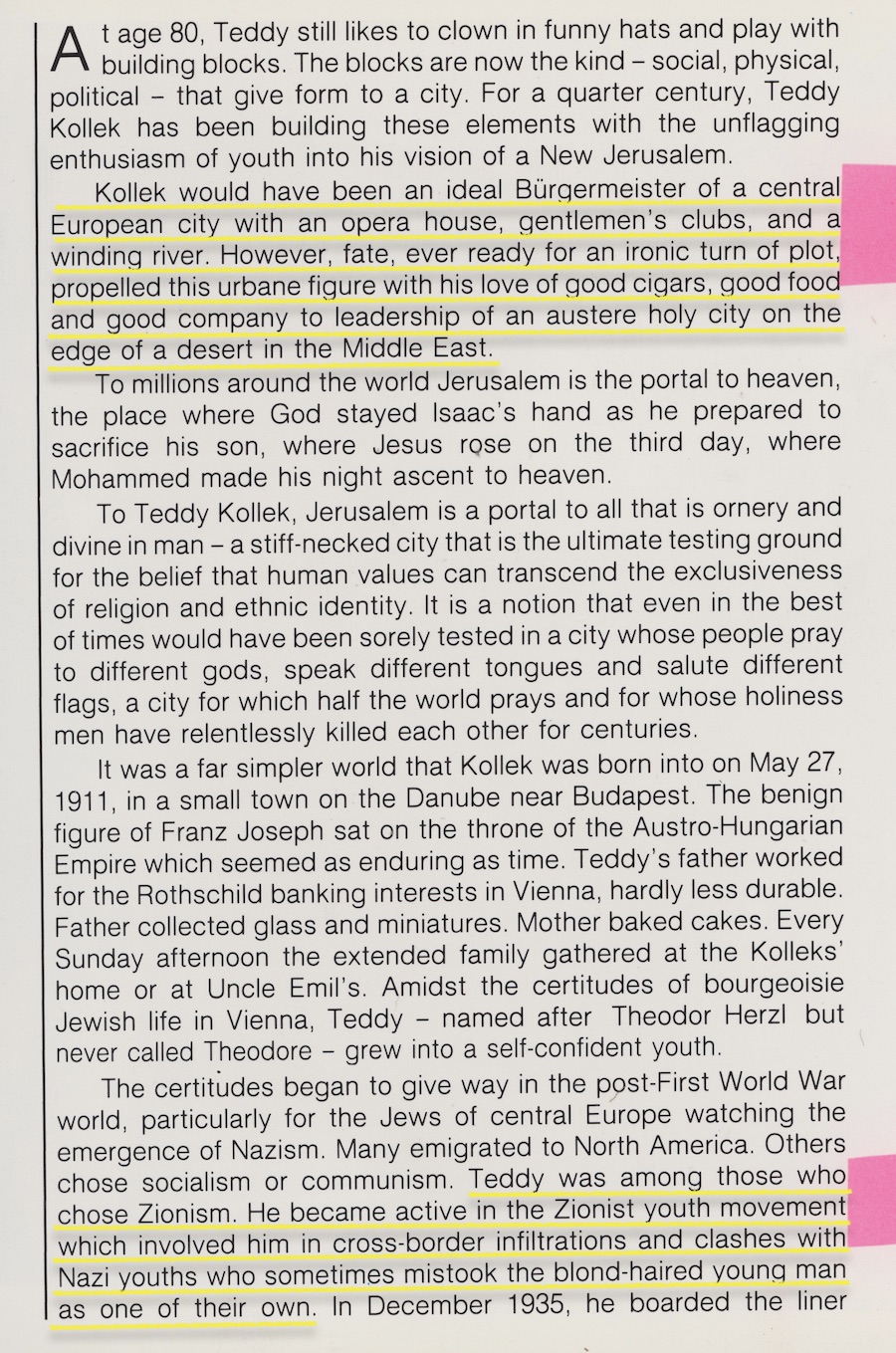
Abstract from the book “Teddy”, published by Mohndruck GmbH, Guetersloh
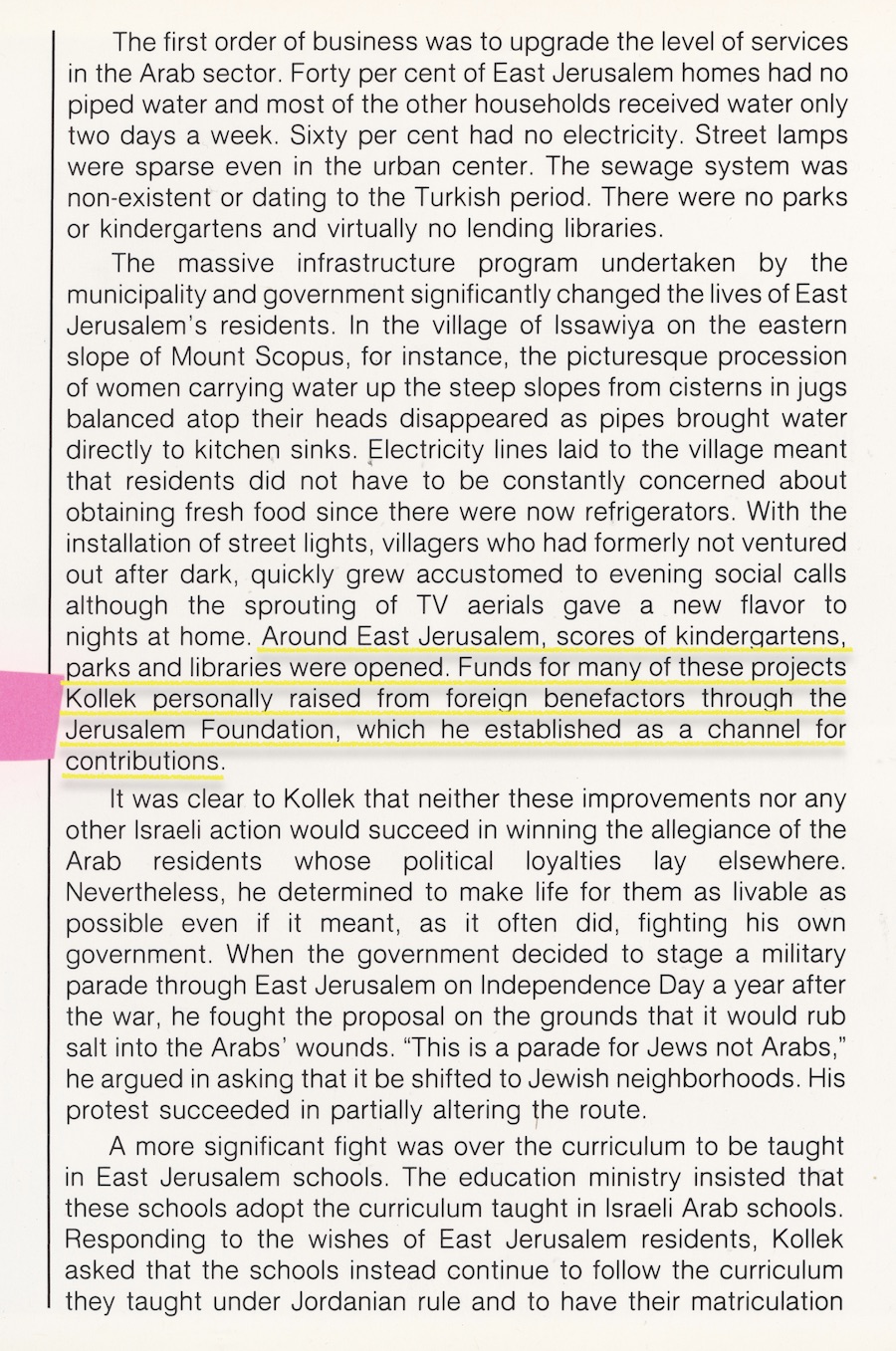
Abstract from the book “Teddy”, published by Mohndruck GmbH, Guetersloh
The Ashkenazi Jews felt influenced by their European ancestry, which led them to seek backing from colonial powers in the North to build a modern state.
For centuries Museums, while serving as cultural and educational centers, have also been instrumental in perpetuating colonial narratives.
The Israel Museum aimed to be a cultural bridge between the West and the Middle East with its modern architecture, similar to museums in cities like Basel, Paris, and New York.
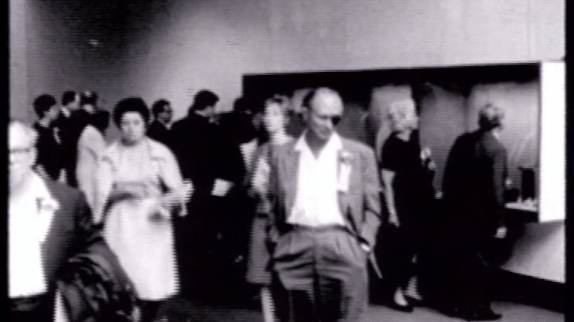
Video excerpt from Opening of The Israel Museum in Jerusalem, 1965
Among those holding speeches on the occasion were Prime Minister Levi Eshkol, President Zalman Shazar, Samuel Bronfman (after whom was named the biblical and archaeological part of the museum) Billy Rose (whose Art Garden we will later observe as a part of the complex) and Mayor Teddy Kollek. Rachel Shazar, wife of President Shazar solemnly cut the ribbon and guests were invited to the building. Exhibitions were first-hand explored by Golda Meir, David Ben Gurion, Shimon Peres, Abba Eban, Isamu Noguchi, Yigael Yadin and Moshe Dayan. Along with a short preview of the show pieces, exposition spaces and close-ups of the engraved names on the personalized parts of the complex, we are also provided with some insights into the handling and restoration routine.
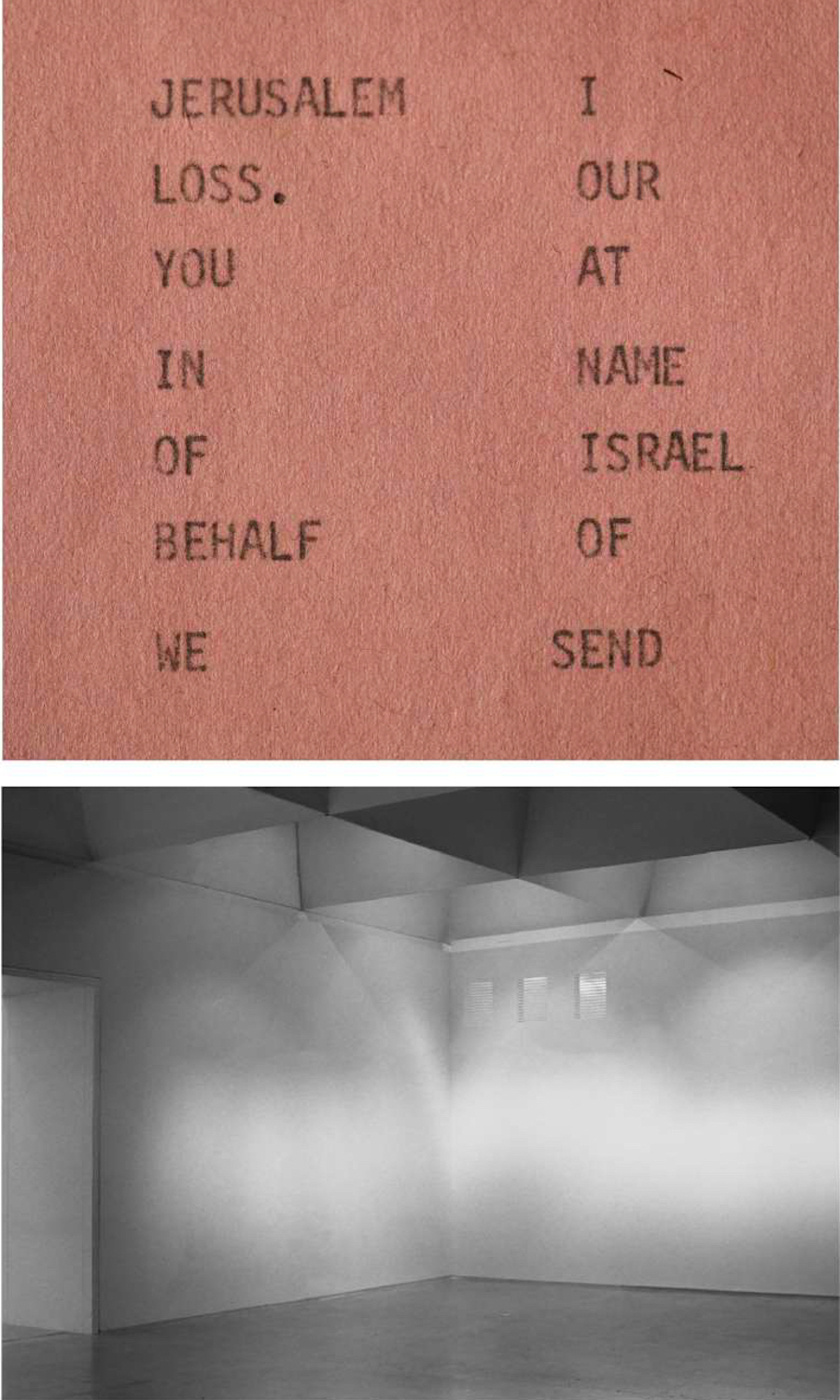
Photograph by Adam Broomberg and Monika Orpik; The Israel Museum Collection, 2019
New York
March 15, 1976
To: MM
CC: Teddy KollekYoung couple – principal interest collecting New Guinea art. Also have Eskimo, African, American Indian and a few Antiquities.
Heard about the Wrights through a relative seven years ago, contacted them and told them about the Museum …they were ready to start doing something for the Museum.
The Wrights want to start giving some of their collection and also purchase New Guinea art for the Museum. They are very unhappy about the Shipman Collection and hesitate to become involved unless the Museum Raises its standards in theififield (their field) of interest. [2]Excerpts of a letter, addressed from EW to MM, March 15, 1976, New York.
The United States and Europe, major philanthropic forces, were the largest collectors of tribal art. They not only provided substantial financial support to the museum but also donated precious archaeological artefacts and objects from Oceania, Africa, and Asia. This raises the question of why Central-African and Oceanic art found its way to Israel.
Even if not all donors seek for public recognition, some still opt to have galleries named in their honour. This in return raises the question of whether these donations can be truly considered as acts of altruism or if they are primarily motivated by ego or tax incentives.
New York
November 11, 1976
Dear MWe at the American Friends of the Israel Museum are very excited about your forthcoming gift for the Maremont Pavilion at the Israel Museum in Jerusalem.
We are also very pleased that you have agreed to join the AFIM International Organization of Patrons. This group was founded several years ago through the initiative of Mayor Teddy Kollek and Baron Edmond de Rothschild of France, the purpose of which was to provide for the equivalent of an endowment fund in the form of patrons who contribute $1,000 annually. Patron membership is the life-blood of the Israel Museum and helps make possible the mounting of yearly exhibitions of paintings, sculpture and archeological objects, as well as lectures, concerts, art films and guided tours. The American Friends of the Israel Museum is pledged to carry out this program.
Sincerely, LS[3]Excerpts of a letter, addressed from LS to M, November 11, 1976, New York
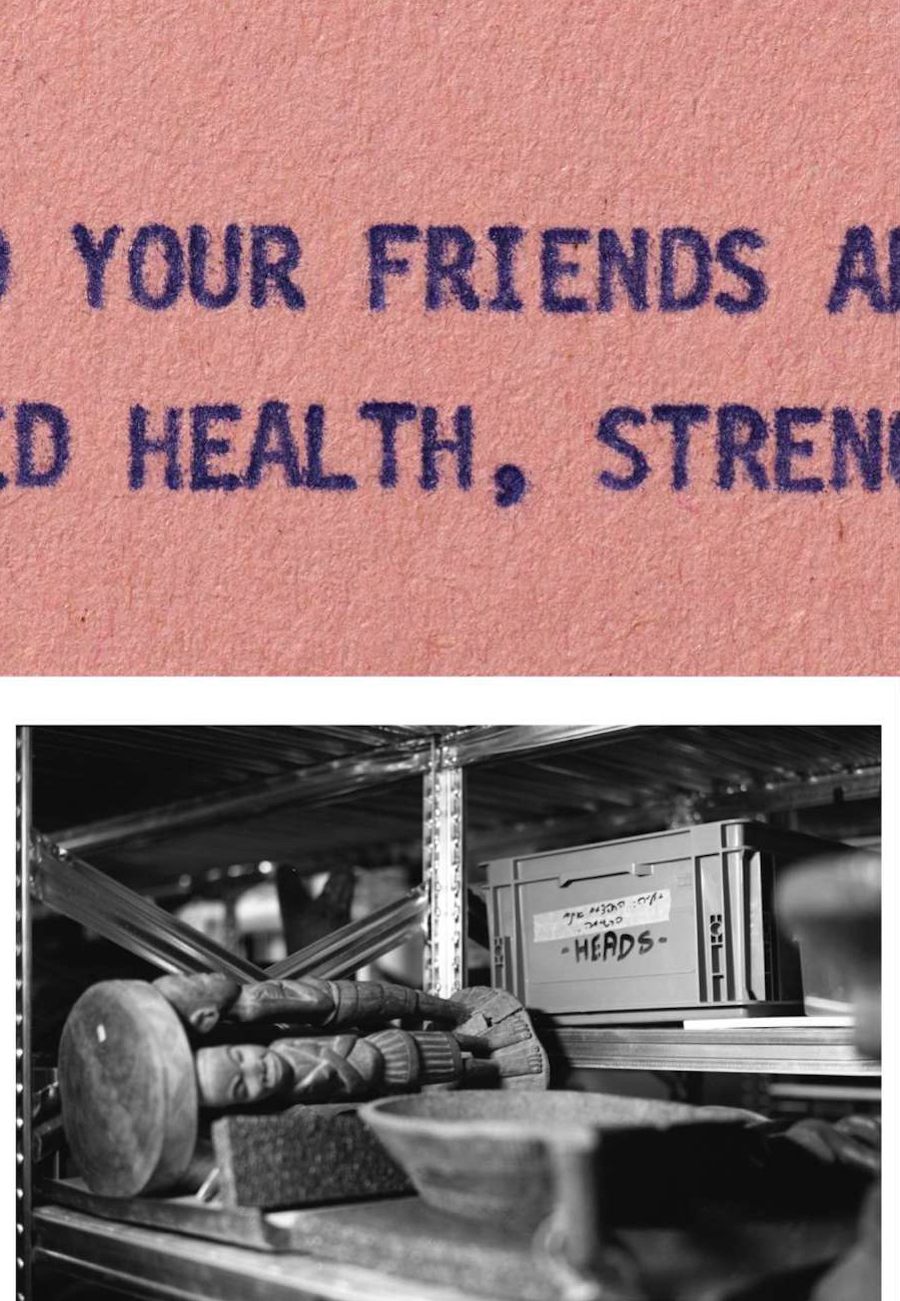
Photograph by Adam Broomberg and Monika Orpik; The Israel Museum Collection, 2019
New York
December 21, 1979
Dear MI know I need not tell you how important the Museum is in the cultural life of our country. And the addition of Oceanic Art to the scope of our Museum’s collections will help widen the world of our people. The beautiful pieces you have already contributed have given us a taste of the exciting things to come.
Yours, Teddy Kollek[4]Excerpts of a letter, addressed from Teddy Kollek to M, December 21, 1979, New York.

Photograph by Adam Broomberg and Monika Orpik; The Israel Museum Collection, 2019
The museum’s creation relied heavily on the support of donors, but some donors had more influence than others which occasionally caused tension. Teddy Kollek aimed to establish the museum as a representation of civilization and prestige among wealthy art collectors, aligning it with Western powers of the colonial era.
Lisbon
April 21, 1982
Dear Mr. KollekBefore my pecuniary contribution I brought items of my collection (Egyptian gods, books about cases of the inquisition, XVII century map about Jerusalem etc; etc.) which I handed over or to Mr. Meshorer and somebody they have told but I have never got even a receipt of the remittance or a letter of thanks. My letters to acknowledge the gift were unanswered of I was told the Mr. M is in New York.
I am telling you all this because I am a real friend of the museum.
Yours faithfully
Dr. P de BS[5]Excerpts of a letter, addressed from DR P de BS to Teddy Kollek, April 2, 1982, Lisbon
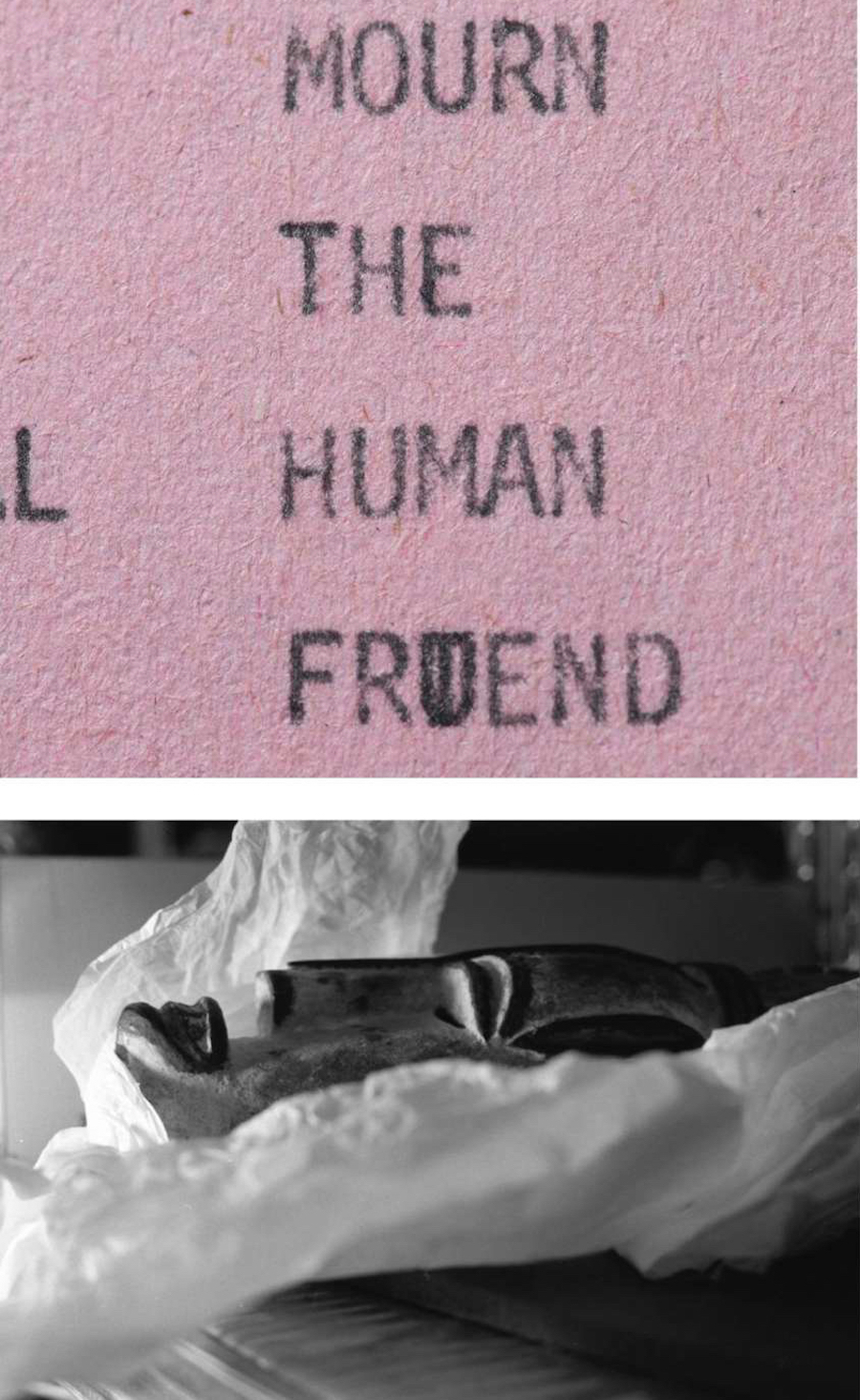
Photograph by Adam Broomberg and Monika Orpik; The Israel Museum Collection, 2019
The Museum of Israel’s role extended beyond culture and arts; it also served as an instrument to demonstrate that Jerusalem could be a place of peace and coexistence. Teddy Kollek was keen on highlighting the political significance of this museum for not only Arab neighbours but the entire Middle East.

Abstract from the book The Jerusalem Foundation, published by Jerusalem Foundation Inc.
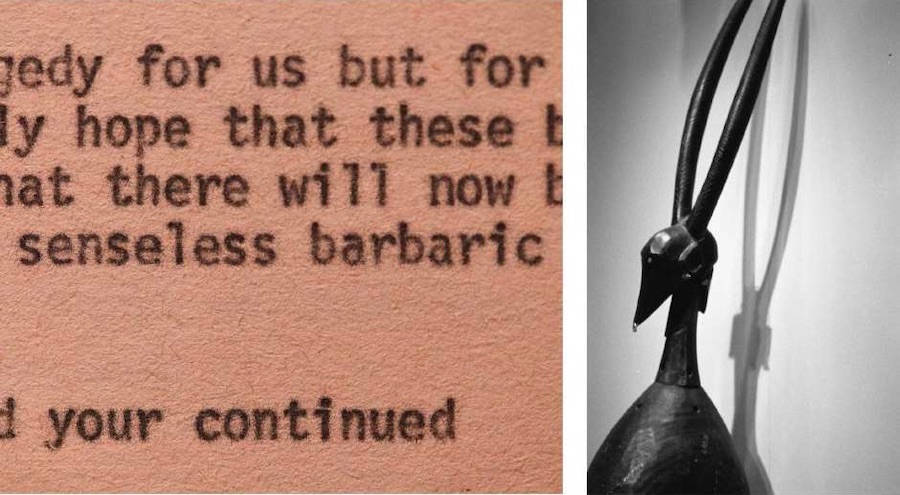
Photograph by Adam Broomberg and Monika Orpik; The Israel Museum Collection, 2019
From a Eurocentric standpoint, narrating the stories of indigenous peoples and tribes without falling into stereotypes and misconceptions is today’s challenge. Their unique worldviews cannot be fully understood through a European lens that is foreign to them.
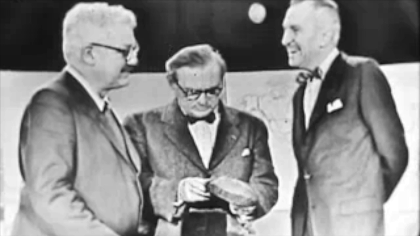
Video excerpt from “What in the world ?” video programme, CBS production, 1955, by CBS Television Network Production
The program offers to witness “the most unusual scientific challenge” accepted by “the group of outstanding experts”.
Viewers are invited to join the investigation performed by the invited panel, before which are brought “strange and mysterious objects from prehistoric times” gathered from the storerooms of museums all around the world.
In this episode, Karl Coon, Jacques Lipchitz and Vincent Price were to identify what in the world it is, where the showpiece is from and when in time it’s from.
Each object is presented to the viewer slowly appearing from the puffs of smoke accompanied by mysterious sounds, while the voice behind the screen provides all the necessary information to be guessed by the experts.
Examination of the piece takes place in the centre of the studio on the round postament surrounded by participants. After closely studying the artefact in their hands and commenting on its appearance, purpose, significance and representation, the gentlemen share their surmises for the confirmation of the moderator and viewers.
In the spotlight were:
Food carving in the form of the crocodile from New Guinea.
Ancient limestone figure of a hippopotamus with two heads from Egypt made during the Roman period.
Mask made by Baoule people from the Ivory Coast of West Africa.
Flint spear point from Scandinavia.
Anima head made of volcanic stone presumably from Costa Rica.
Jar in the form of a human from Panama.
Tobacco pipe made by Kenyan people.
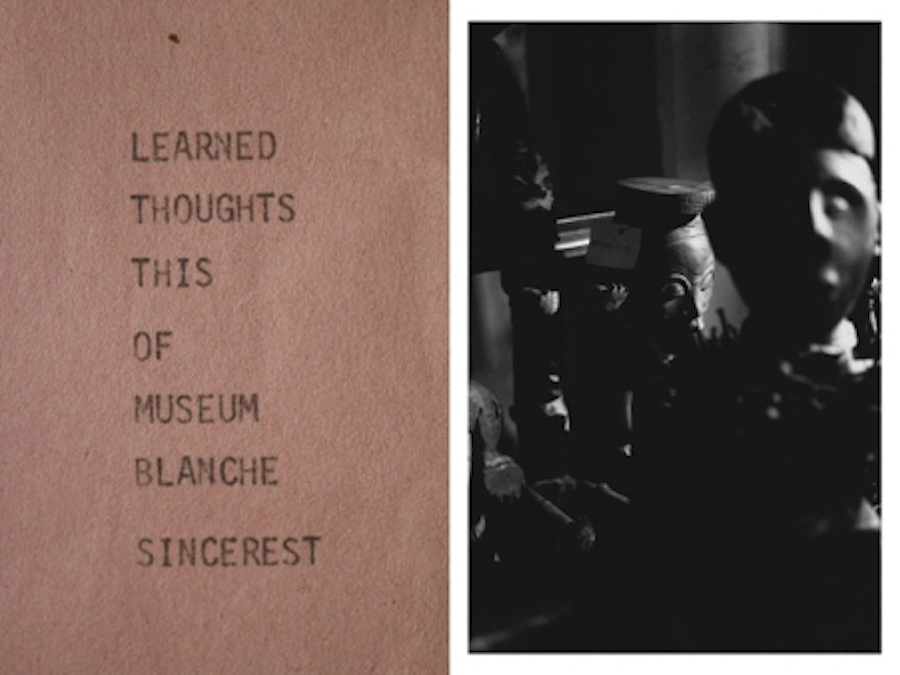
Photograph by Adam Broomberg and Monika Orpik; The Israel Museum Collection, 2019
When presenting native and indigenous cultures in museums, the challenge lies in avoiding the perpetuation of colonial narratives in the prestigious “white cube” environment. And so we have the Israel Museum with a collection of modernist masterpieces, and alongside them proudly displayed tribal works, earned through precious connections with Western and American donors. The picture matches perfectly with the pattern established and widely used by self-respecting colonial powers.
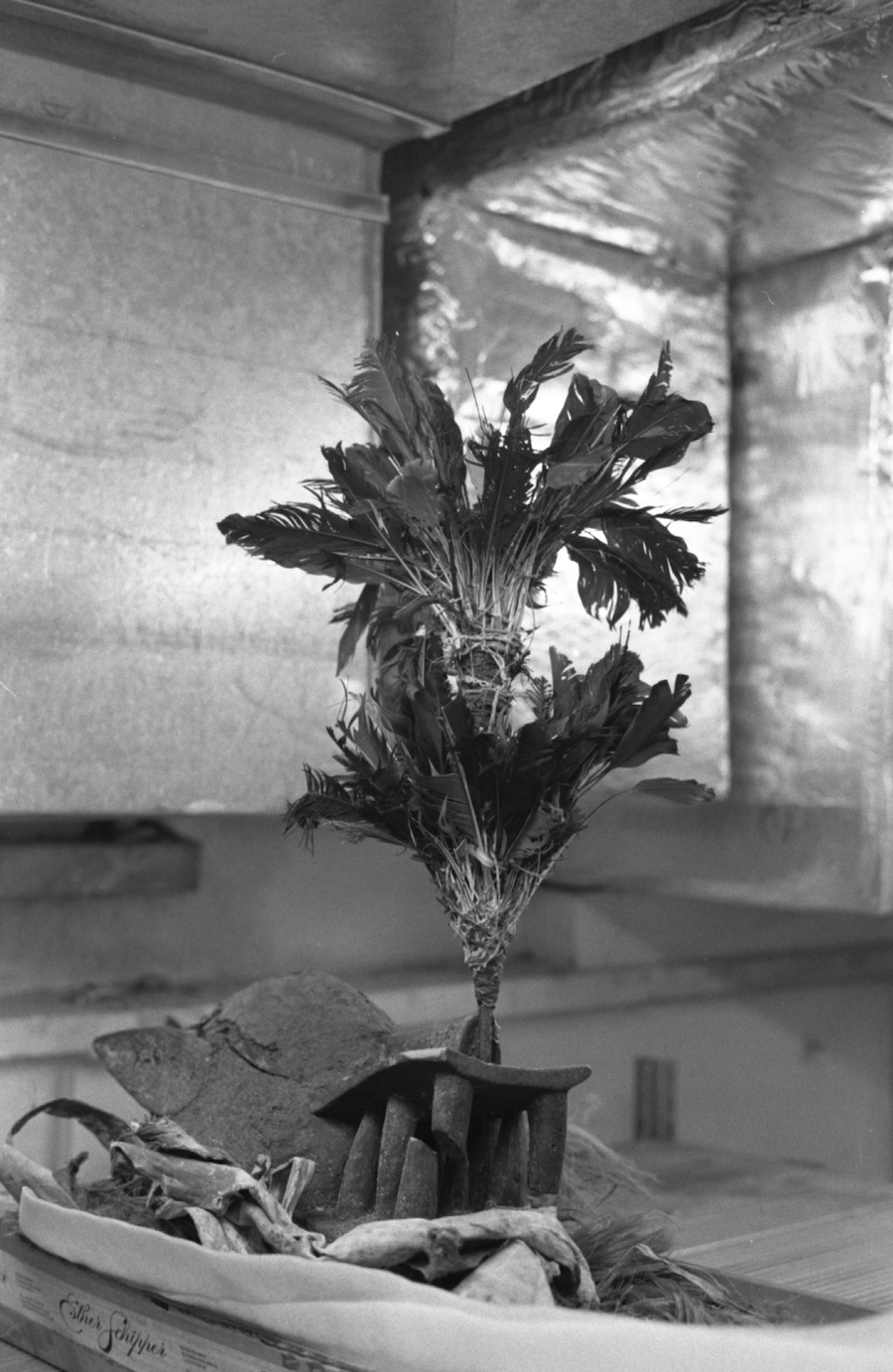
Photograph by Adam Broomberg and Monika Orpik, The Israel Museum Collection, 2019. (Object stored in a box with Esther Schipper’s (Berlin-based gallery) name on it)
Article by: Adam Broomberg, Monika Orpik, Rebecca Routman and Mariia Vydrenko on behalf of Artists + Allies x Hebron (AAH). AAH is Issa Amro (Hebron) & Adam Broomberg (Berlin).
(Cover photo: Teddy Kollek, 27 May 1911 – 2 January 2007, Israeli politician, Mayor of Jerusalem 1965-1993)
| ↑1 | Teddy Kollek’s sppech, date unknown. |
|---|---|
| ↑2 | Excerpts of a letter, addressed from EW to MM, March 15, 1976, New York. |
| ↑3 | Excerpts of a letter, addressed from LS to M, November 11, 1976, New York |
| ↑4 | Excerpts of a letter, addressed from Teddy Kollek to M, December 21, 1979, New York. |
| ↑5 | Excerpts of a letter, addressed from DR P de BS to Teddy Kollek, April 2, 1982, Lisbon |
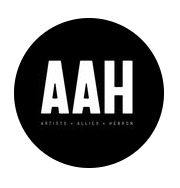
Artists + Allies x Hebron is activist artistic project and an NGO run by Adam Broomberg @adambroomberg in Berlin, Germany and Issa Amro @issaamro in Hebron, Palestine. And with Hebron as its focal point and olive trees as its subject matter. We aim to support Palestinian Human Rights in an artistic, non-violent, poetic way.
"A desk is a dangerous place from which to watch the world" (John Le Carré)